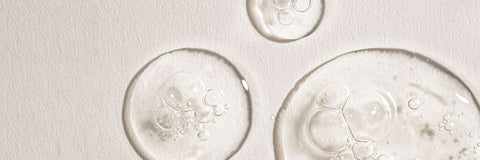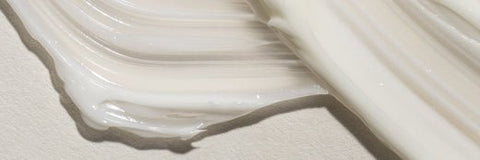We get it– a skincare brand touting the benefits of moisturizing is like a doctor blasting the importance of eating right and exercising. Probably nothing you haven’t heard before. But did you know that there is actually a right way to moisturize– which bears implications that there is definitely a wrong way.
There is much more to keeping your skin properly conditioned than just applying your product of choice, especially if you could stand to make better choices about what you’re using. Read on to learn how to keep your complexion properly moisturized.
IN A NUTSHELL
Main Takeaways: No matter your skin type, everyone can benefit from a properly formulated moisturizer. But applying the proper technique is just as important as choosing the right product.
Good to Know: When moisturizing, it is critical to not apply any downward pressure, as this can amplify the effects of gravity overtime and lead to a less-than-lifted complexion.
Recommended Products: Crème de la Cream Brightening Moisturizer, H2 Oh Yeah Hydrating Moisturizer, and Youth Fairy Retinol Moisturizer.
The Importance of Moisturizing
We all know that moisturizing the face has long been the go-to measure for staving off wrinkles and other signs of aging. That’s because doing so helps add volume, giving your face a plumper, firmer appearance. This makes wrinkles and fine lines less perceptible and prevents the dreaded look of scaly, dry skin. But vanity aside, properly moisturizing one’s skin is essential to the overall health of your body’s largest organ.
When the skin becomes drier than it should, the resulting imbalances can introduce a host of issues like irritation, redness, flakiness, and bumps; each telltale signs of struggling skin. But what you may be surprised to know is that dry, aggravated skin is at increased risk for becoming excessively oily, because your skin is trying to overcompensate. This overproduction can lead to grimy, clogged pores, which can cause things like persistent breakouts and even acne. Further, our skin is our body’s first physical line of defense against infection and allergens. Preventing cracks in its surface, which can often be caused by dryness, is important not just for skin health, but whole-body wellness.
How to Moisturize Your Face
In order to get the most benefits of moisturizing, it’s important to choose the best moisturizer for your skin type. Choosing one with the wrong ingredients for your skin could mean not enough moisture for your skin or clogged pores. It’s also important to apply that moisturizer properly.
When and How Often to Moisturize
Moisturizing one’s face is something that should be done twice a day; once in the morning and once at night. This helps your moisture levels remain at a healthy constant for a full 24 hours. Your moisturizer should be applied after cleansing and the use of any toners and serums. If it’s daytime, be sure to moisturize before applying your sunscreen to get the maximum benefits of both.
How to Properly Apply Moisturizer
1. Start with clean, slightly damp skin. This will create the best possible environment for proper absorption.
2. Gently dab small amounts of moisturizer, like our Crème de la Cream all over the face and neck. You may want to avoid the eye area, as some face moisturizers may irritate the ultra-sensitive skin on and around your peepers. For this region, it’s best to use a dedicated eye cream, which hydrates, illuminates, and temporarily de-puffs.
3. Then use soft circular upward motions with your finger pads to massage in your face cream. Avoid any firm sweeping, swiping, or rubbing motions, as these can disturb the outer layers of the skin and lead to micro-tears, the stretching of pores, and premature signs of aging. It is also critical to not apply any downward pressure, which can amplify the effects of gravity over time.
4. Give special attention to the areas that are at greater risk for signs of aging, like the corners of the eyes, nasolabial folds and in between your brows. Apply a bit more moisturizer to these areas if necessary and repeat the process until your skin feels smooth and comfortably nourished.
Ingredients to Avoid
Parabens can be harsh on the skin, causing irritation. They also have been linked to a number of serious health concerns.
Silicones work to form a barrier on the area of application. While they’re not dangerous, they have their downside, with an ability to trap oil, dirt, and dead skin, while potentially preventing the beneficial ingredients in your products from getting to where they need to go.
Other Ways to Moisturize
It’s also important to note that moisturizing replenishes the oil in your skin, while hydrating replenishes the water in your skin. No matter what your skin type, you need a healthy balance of both. H2 Oh Yeah hydrating moisturizer focuses on both restoring hydration and moisture to your skin. Other means of hydration include using a humidifier and simply drinking more water.
To amplify the effects of your moisturizer and maintain properly balanced skin, hydrating serums and facial mists are the way to go. Facial oils are also great for moisturizing the skin. These should be applied before your moisturizer, as face creams include occlusive ingredients to seal it all in. We also recommend using a night cream, such as Youth Fairy retinol moisturizer, in the evening to help your skin repair and restore itself while you sleep.
Proper hydration is a major component of our bodies looking and feeling their best; the same is true for our skin. No matter what your skin type, don’t go a day without applying facial moisturizer. If you aren’t sure where to start, check out our three face cream options, all of which target specific skincare concerns.








